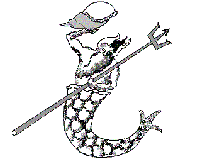All Rights Reserved
|
|||||
|
Author/s
|
Page
|
||||
|
1. MARINE MOLLUSCS
|
|||||
|
Buzzurro, G. & Russo, P.
|
NOTES AND COMMENTS ON THE MEDITERRANEAN
SPECIES OF THE GENUS DIODORA GRAY, 1821 (ARCHEOGASTROPODA:FISSURELLIDAE)
WITH A DESCRIPTION OF A NEW SPECIES
Abstract: The following is the description of Diodora demartiniorum
n. sp. based on shell characters and a statistical analysis of conchometric
parameters. A comparison is also made with various species of fossil
Diodora, as well as with all the species living in the Mediterranean
Sea, with special regard to Diodora italica (Defrance, 1820) the taxon,
which is morphologically closest to the new species. |
1
|
|||
| Mienis, H. K. |
Brief Report Concening The 1st National Malacology Congress Held In Izmir Turket |
10
|
|||
| Mienis, H. K. |
A CONFIRMATION OF THE PRESENCE OF TEREBRA AMOENA IN THE RED SEA Abstract: The discovery of a living Terebra amoena among mollusc
material dredged S.E. of Tiran Island, northern Red Sea, confirms the
presence of this species in the Red Sea. It was previously known from
a single juvenile specimen collected in the Gulf of Aqaba. |
11
|
|||
|
Mienis, H.K.
|
AN OLD FIND OF RETUSA DESGENETTII (AUDOUIN,
1826) Abstract: A single shell of Retusa desgenettii was found among mollusc material from the Bardawil Lagoon, North Sinai, Egypt, which had been collected in December 1969. This means that the arrival of this Erythraean species in the Mediterranean Sea took place at least some 35 years ago. |
12
|
|||
|
Mienis H.K, & Revital Ben-David-Zaslow
|
A PRELIMINARY LIST OF THE MARINE MOLLUSCS OF THE NATIONAL PARK AND NATURE RESERVE OF AKHZIV-ROSH HANIQRA Abstract: A study of marine molluscs collected in the National
Park and Nature Reserve of Akhziv-Rosh HaNiqra, Israel, and present
in the National Mollusc Collections of Israel and some private collections,
resulted in the recording of 283 species. Most species had been found
near Akhziv (260), followed by Rosh HaNiqra (108). The offshore islands
are represented by 4 species only! Especially poor results were noted
among the Scaphopods and the Cephalopods (one species each). Lessepsian
and other Indo-Pacific migrants accounted for 13.4% among the species.
|
13
|
|||
|
Heiman, E. L. |
"SHELL NAMES" A New Interesting and Useful Book |
38 |
|||
|
Heiman E.L.,
|
VARIABILITY OF COWRY POPULATIONS 21. INTRASPECIFIC VARIATION IN EROSARIA LAMARCKII (GRAY, 1825) Abstract: Intraspecific variation in Erosaria lamarckii is studied statistically using 211 shells (batches of shells from different localities), in order to learn whether it is a monotypic species or it may be divided into two subspecies. This study confirmed that in the majority of shells from East Africa the dorsal spots are partially ocellated with purplish grey, whereas in shells of the species from India and Thailand all dorsal spots are pure white, except for a few lateral ones. An intermediate zone separating Erosaria lamarckii lamarckii of East Africa from Erosaria lamarckii redimita of India, Thailand and Indonesia probably stretches from northern Kenya to Pakistan. Nine formae of E. lamarckii are recognized and illustrated. |
39
|
|||
|
Heiman E.L.,
|
VARIABILITY OF COWRY POPULATIONS 22. INTRASPECIFIC VARIATION IN ERRONEA CAURICA (LINNAEUS, 1758) by E.L. Heiman*) |
44
|
|||
